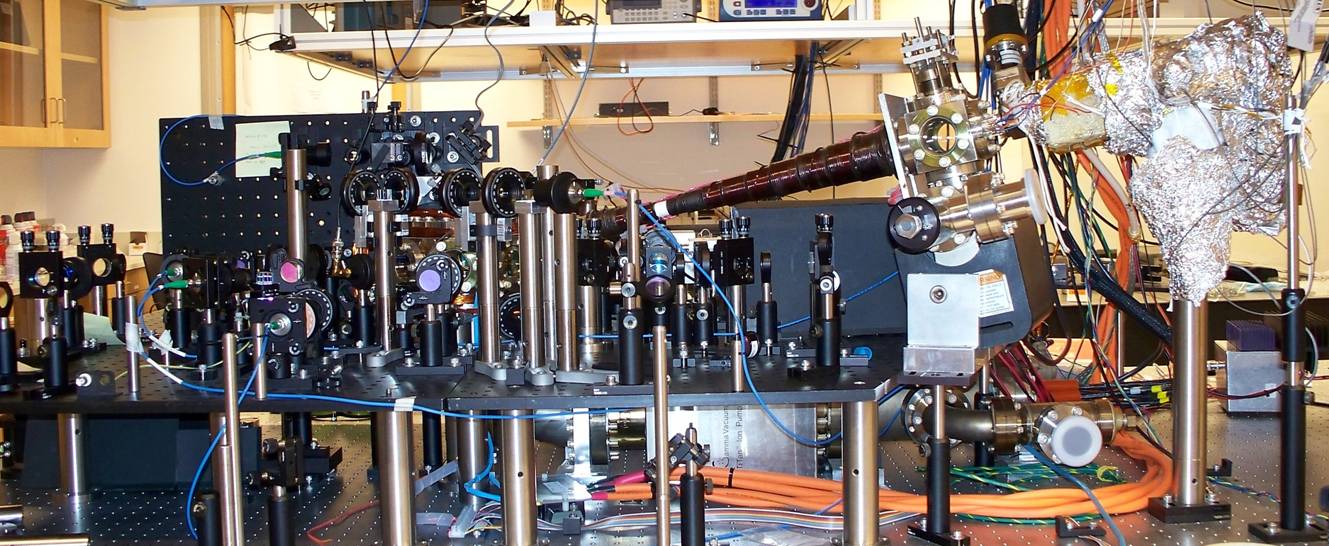Proposal: Bose-Einstein Condensation of Atomic Cesium
In the same sense that the laser has become a fundamental tool in nonlinear and quantum optics, Bose-Einstein condensation as a source of coherent atoms serves as the starting point for many studies of interacting atomic quantum gases. Bose-condensation of atomic cesium is particularly useful as a first step in studying strongly interacting gases, molecular condensation, few-body interactions, and condensed-matter analog systems showing quantum coherence. At the same time, cesium remained for many years a challenging atom to condense. Our group was the second to achieve this milestone, following the pioneering work achieved in the group of R. Grimm in Innsbruck. Our apparatus is described below.
Chamber Design
| The main trapping chamber, on the left side, contains seven 1 1/3" viewports, eight 2 3/4" viewports (six coated for 670~1064 nm light and two ZnSe for 10.6 um) and two 1.77" viewports in the vertical direction. The upper right part of the chamber is the Zeemann slower and the bottom part the main ion pump and the TSP. A special feature of our design is the recessed top and bottom windows, each 1/2" from the atoms, to permit excellent optical access. |
 |
 |
| This photo is taken in the same viewing angle as shown above. Inside the aluminum foil (shimmering mess) on the right side is the atomic source oven at 70 degree C and a differential pumping tube at 0 degree C. On the left side, the chamber is surrounded by optical components for laser cooling and trapping atoms. The thick orange cables on the optical table supply current for generating magnetic fields. |

